What is MPC Lens? (= 2-Methacryloyloxyethyl phosphorylcholin)
Posted by Lurube on on 19th Dec 2022
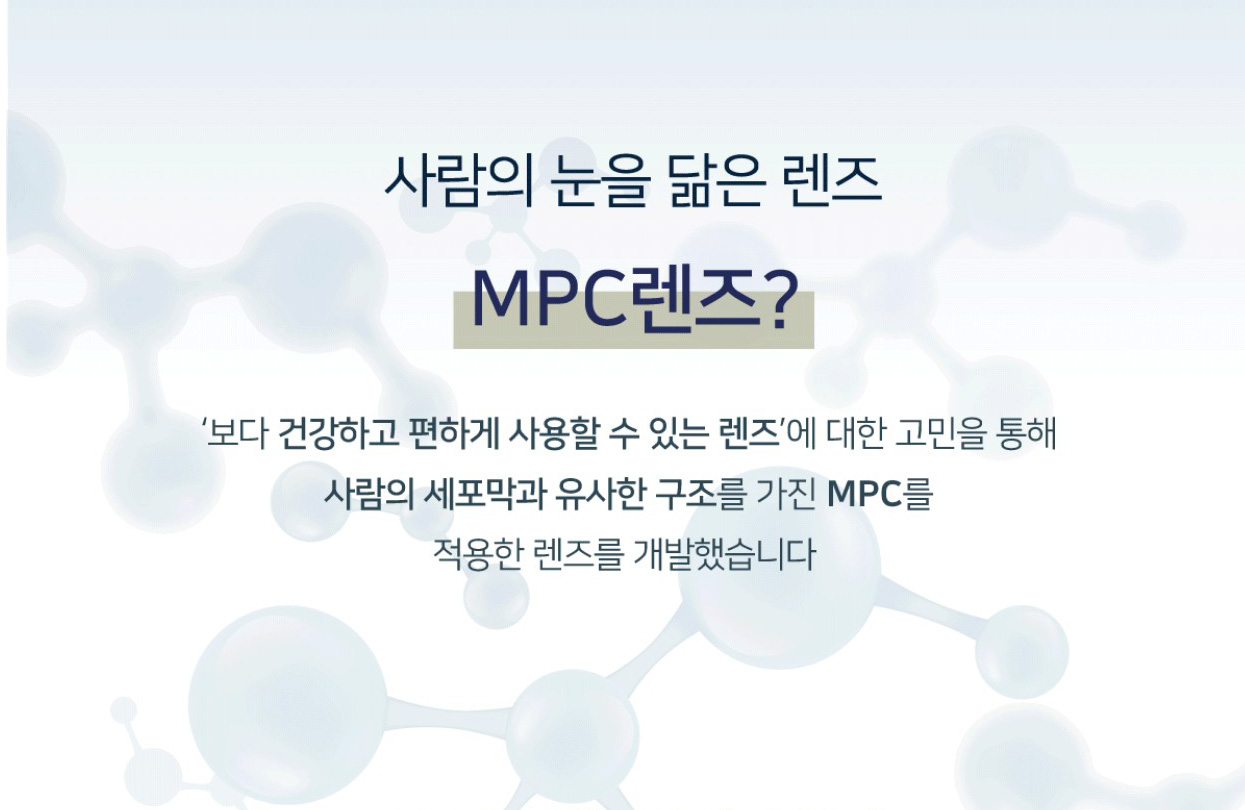
What is MPC? (= 2-Methacryloyloxyethyl phosphorylcholin)
As a material that has evolved one step further from silicone hydrogel, it was initially used as a skin substitute or blood vessel substitute because of its human body-friendly and antibacterial power, such as substituting for skin or using it for artificial blood vessels. For the first time to be used as a contact lens, the PC material of CooperVision's Proclear One Day was used for the first time as a similar material, and after that, it began to be produced as a product very little by little from 2015.
Early PC materials were favorably received by a small number of consumers because of their low hardness and stiff fit, but many users were rejected due to poor initial usability, and more and more products with soft lenses are being developed as contact lenses.
MPC (Methacryloyloxyethyl Phosphoryl Choline) lens, also called PC lens (Phosphorylcholine) or PUSCON lens, is a material suitable for the human body because it has a structure similar to the human cell membrane.
MPC is made of polymeric monomer 2-Methacryloyloxyethyl phosphorylcholine (MPC) 4, a new material of artificial biocomponent approved by the US FDA, and has been developed as a soft contact lens that is not only stable to the eyes but also more human-friendly after silicone hydrogel lenses.
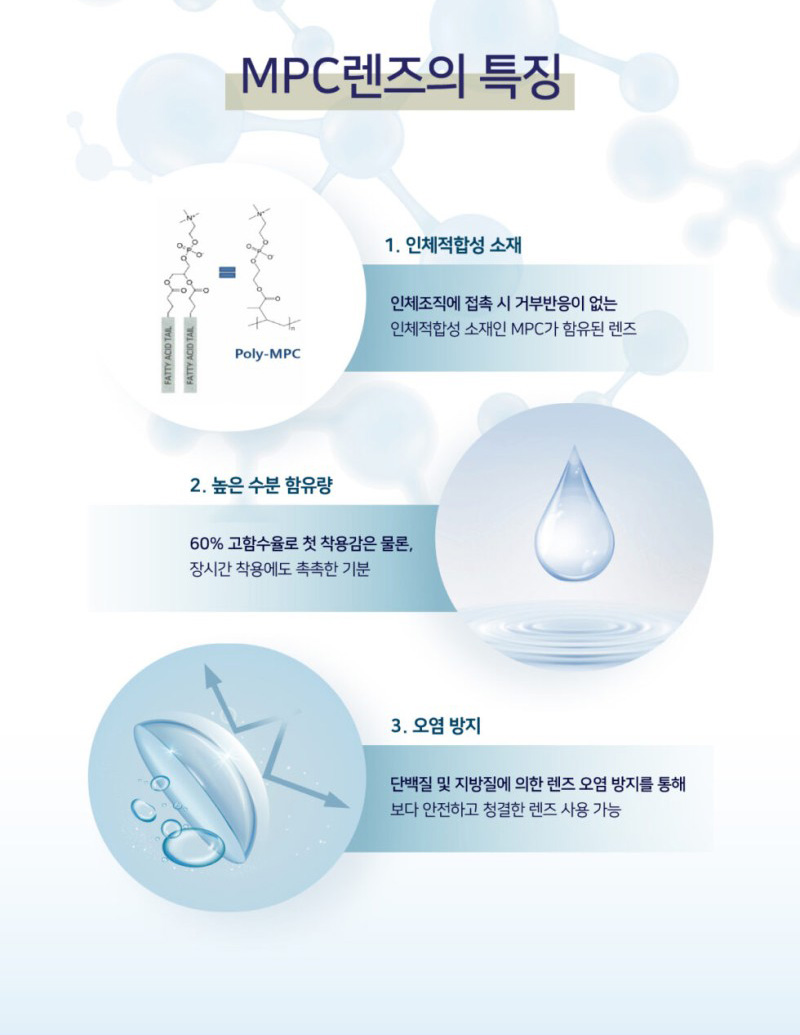
Mpc Lens Features
- Body-compatible material: Lenses containing MPC, a body-compatible material that does not cause rejection when in contact with human tissue.
MPC is called a body-compatible material because it has the same structure as that of phospholipids, which are the main components of the cell membrane surrounding cells. - High moisture content: With a high moisture content of 60%, it feels moist for the first time as well as long-time wear
- Contamination Prevention: A safer and cleaner lens can be used by preventing lens contamination by proteins and lipids.
MPC has the characteristic of suppressing the adsorption of protein, which is the main cause of lens contamination. - Prevent dehydration of the lens due to its hydrophilic molecular structure
- Increased tear film stability by not losing moisture to the lens
- Reduced eye fatigue due to less resistance to blinking due to reduced surface friction
- Reduces bacterial proliferation by preventing adsorption of proteins and foreign substances.
- It has a feature that provides comfort and clear vision even when wearing the lens for a long time.
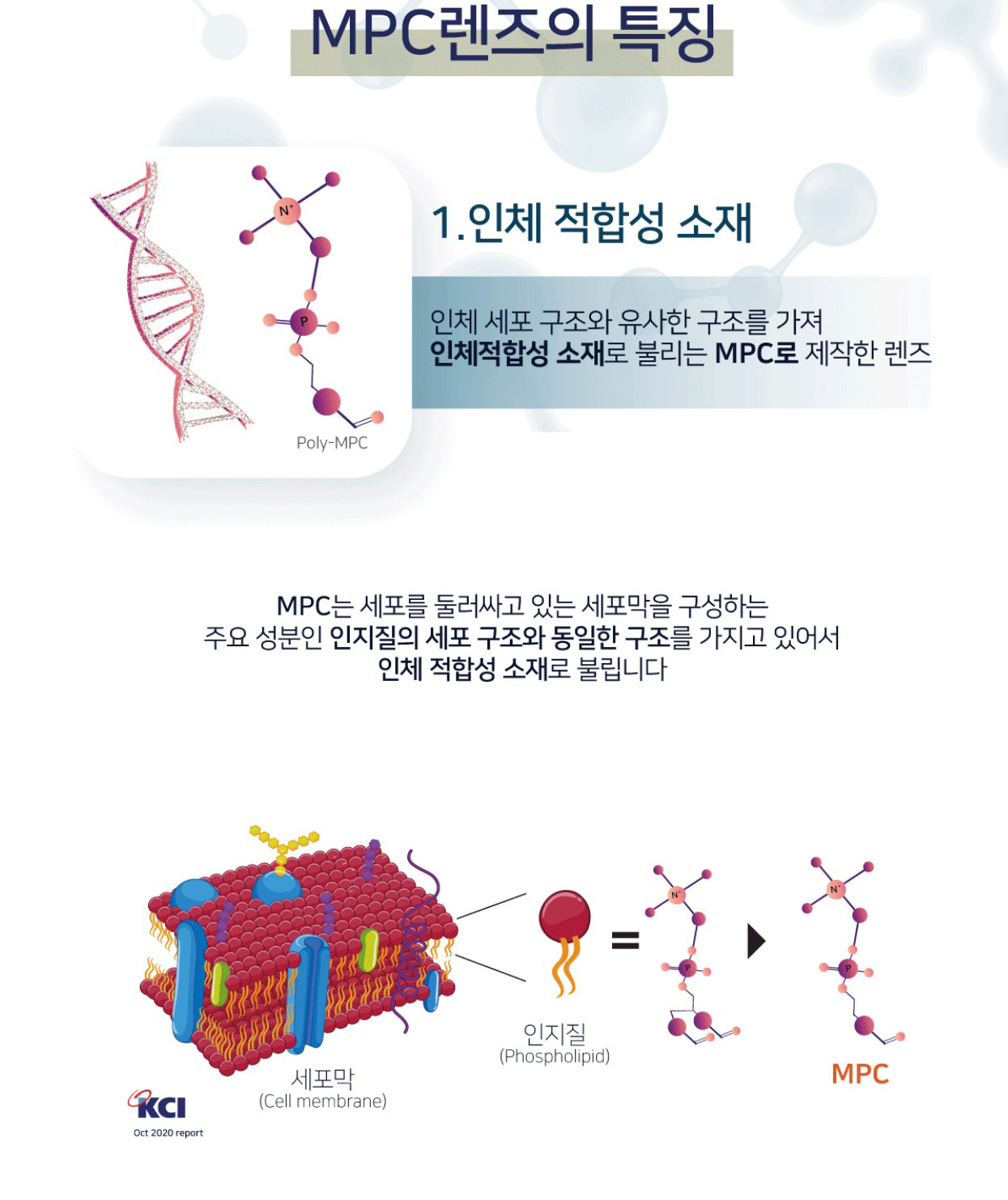
Body-compatible material: Lenses containing MPC, a body-compatible material that does not cause rejection when in contact with human tissue.
MPC is called a body-compatible material because it has the same structure as that of
phospholipids, which are the main components of the cell membrane surrounding cells.
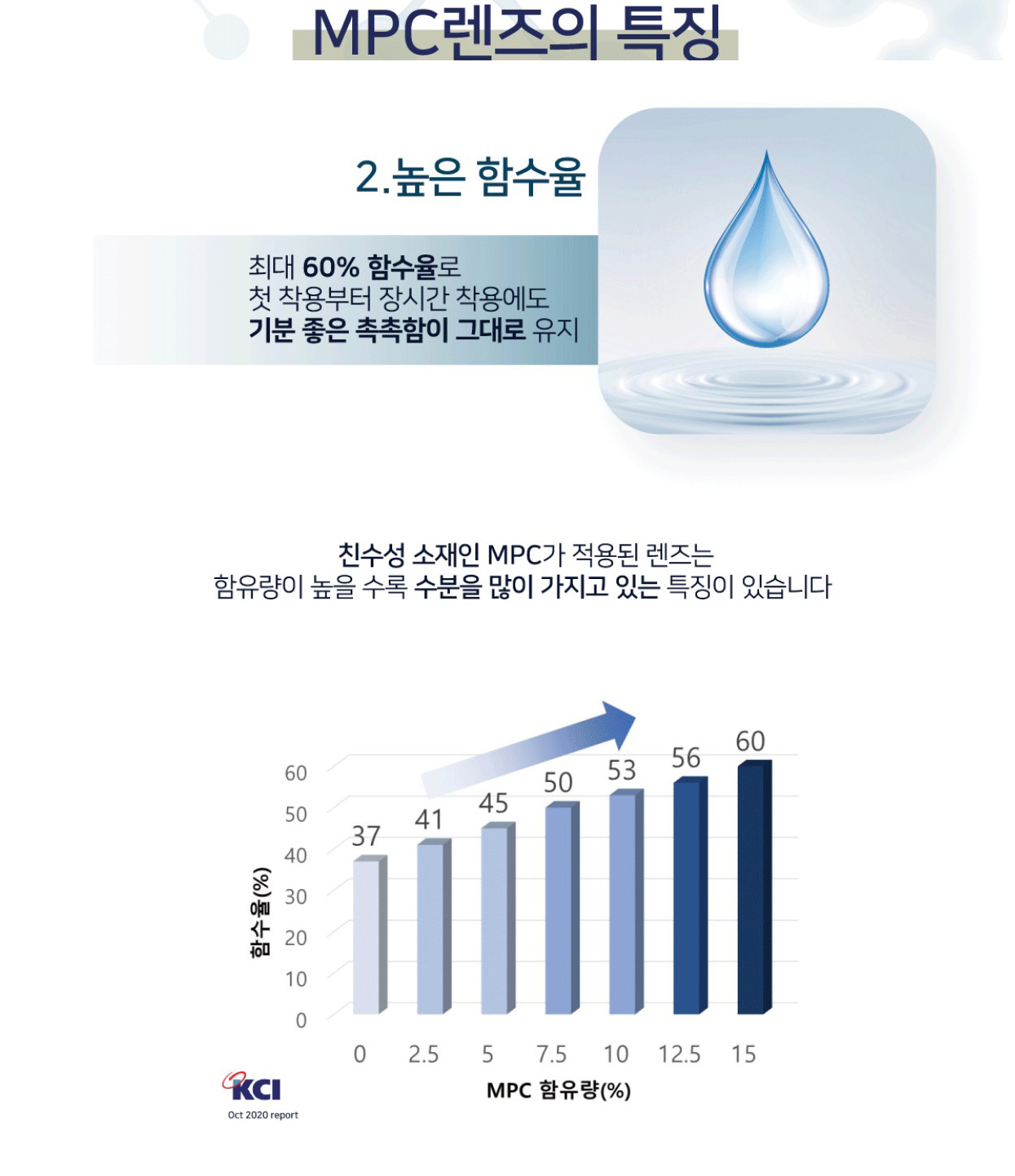
High moisture content: With a high moisture content of 60%, it feels moist for the first time as well as long-time wear
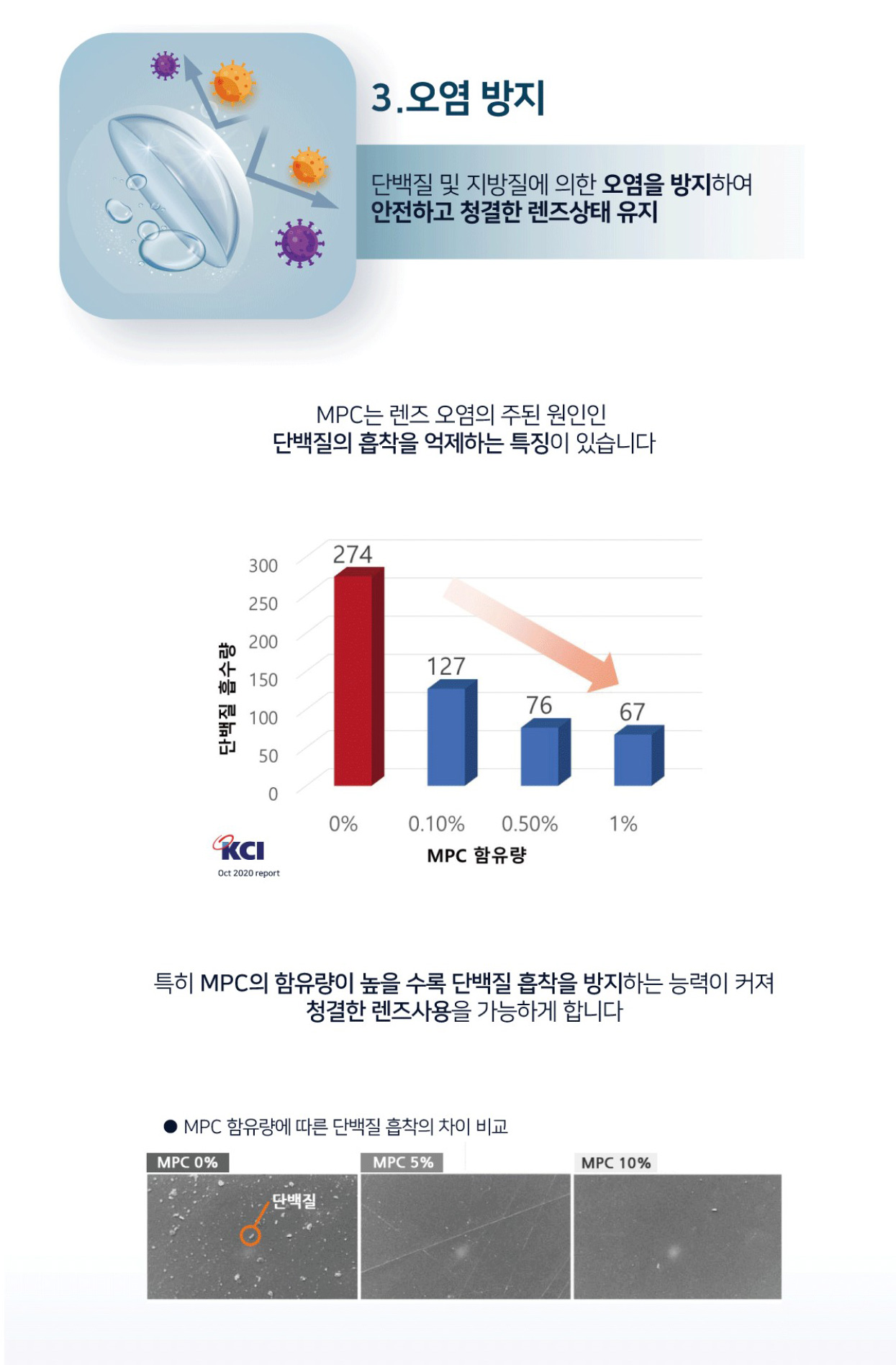
Contamination Prevention: A safer and cleaner lens can be used by preventing lens contamination by proteins and lipids.